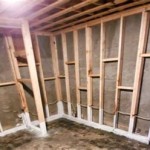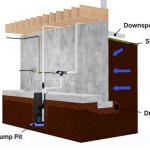Get Rid of Musty Smell In Basement Carpet
A musty smell in basement carpet is a common problem for homeowners, often indicative of moisture issues. Basements, by their nature, are prone to dampness due to their location below ground level. This dampness can seep into the carpet fibers, creating a breeding ground for mold and mildew, which are the primary culprits behind the unpleasant odor. Addressing this issue promptly is crucial not only for improving the air quality within the home but also for preventing further damage to the carpet and the structure of the basement itself. The longer the musty smell persists, the more deeply ingrained the mold and mildew become, making remediation more difficult and costly.
Identifying the source of the moisture is the first and most critical step in eliminating the musty smell. Without addressing the root cause, any cleaning efforts will only provide temporary relief, and the smell will inevitably return. Potential sources of moisture include leaky pipes, condensation, poor ventilation, inadequate drainage around the foundation, and groundwater seepage. A thorough inspection of the basement, including walls, floors, and ceilings, is necessary to pinpoint the origin of the problem.
Once the source of the moisture has been identified and rectified, the next step involves cleaning and drying the affected carpet. The specific cleaning method will depend on the extent of the damage and the type of carpet fiber. In some cases, professional carpet cleaning may be necessary to effectively remove the mold and mildew and restore the carpet to its original condition. In other cases, DIY methods may suffice. Regardless of the chosen method, thorough drying is essential to prevent the recurrence of the musty smell.
Identifying and Addressing Moisture Sources
The foundation of eliminating a musty smell in basement carpet lies in identifying and permanently addressing the source of moisture. This necessitates a detailed inspection of the basement environment. Begin by examining the walls for any signs of water stains, discoloration, or efflorescence (a white, powdery deposit indicating mineral salt deposits left by evaporating water). Check for cracks in the foundation, as these can provide entry points for groundwater. Pay attention to areas around windows and doors, as leaks can occur due to improper sealing.
Next, inspect the plumbing system for any leaks, including pipes, faucets, and water heaters. Even small, seemingly insignificant leaks can contribute to moisture buildup over time. Condensation can also be a significant source of moisture, particularly during warmer months. Check for condensation on cold surfaces, such as pipes and concrete walls. Improving insulation and ventilation can help reduce condensation. Consider the effectiveness of the home's drainage system. Ensure that gutters and downspouts are properly functioning and directing water away from the foundation. The ground around the foundation should slope away from the house to prevent water from pooling and seeping into the basement.
If the source of moisture is difficult to identify, consider hiring a professional to conduct a moisture inspection. They have specialized equipment and expertise to detect hidden moisture problems. Once the source is located, it must be addressed promptly. This may involve repairing leaks, sealing cracks, improving drainage, or enhancing ventilation. Neglecting to address the underlying moisture issue will only lead to a recurrence of the musty smell and potential structural damage.
Cleaning and Deodorizing Basement Carpet
After the moisture source has been addressed, the carpet requires thorough cleaning and deodorization. The appropriate cleaning method will depend on the type of carpet, the severity of the mold and mildew growth, and personal preferences. Before proceeding with any cleaning, it is crucial to test a small, inconspicuous area of the carpet to ensure that the cleaning solution does not cause discoloration or damage. Safety precautions, such as wearing gloves and a mask, are essential to protect against potential exposure to mold spores and cleaning chemicals.
For light to moderate musty smells, a thorough vacuuming with a HEPA filter vacuum cleaner is a good starting point. This will remove surface debris and loose mold spores. Following vacuuming, consider using a carpet cleaning machine with a dedicated carpet cleaning solution. Many carpet cleaning solutions are specifically formulated to target mold and mildew. Follow the manufacturer's instructions carefully when using the machine and solution. Ensure that the carpet is thoroughly rinsed after cleaning to remove any residual cleaning solution, as leftover residue can attract dirt and moisture.
For more severe cases of mold and mildew growth, professional carpet cleaning may be necessary. Professional cleaners have specialized equipment and knowledge to effectively remove deep-seated mold and mildew and restore the carpet to its original condition. They may also use antimicrobial treatments to prevent future mold growth. If DIY cleaning is preferred, consider using natural cleaning solutions such as baking soda, vinegar, and hydrogen peroxide. Baking soda is an excellent deodorizer and can help absorb moisture. Sprinkle baking soda liberally over the carpet, let it sit for several hours, and then vacuum it up. Vinegar is a natural disinfectant and can help kill mold and mildew. Mix equal parts vinegar and water in a spray bottle and spray the carpet lightly. Let it sit for several minutes, then blot it dry. Hydrogen peroxide is another effective disinfectant and can be used to target stubborn stains. Pour hydrogen peroxide directly onto the stain, let it sit for several minutes, and then blot it dry.
Regardless of the chosen cleaning method, thorough drying is essential. Use fans and dehumidifiers to circulate air and remove moisture from the carpet. Open windows to improve ventilation if weather permits. Avoid placing furniture back on the carpet until it is completely dry to prevent moisture from being trapped. Consider renting or purchasing a carpet dryer for faster and more efficient drying.
If despite thorough cleaning, the musty smell persists, consider replacing the carpet altogether. In some cases, the mold and mildew growth may be too extensive to be effectively removed, and replacing the carpet may be the only viable option to eliminate the smell and prevent further health risks.
Preventing Future Musty Odors
Prevention is paramount in avoiding future musty odors in basement carpets. Implementing proactive measures to control moisture levels and maintain good ventilation is crucial. Regular inspections of the basement, plumbing system, and foundation are essential to identify and address potential moisture problems before they escalate. Promptly repair any leaks or cracks. Consider installing a dehumidifier to maintain optimal humidity levels in the basement. The ideal humidity level is between 30% and 50%. Regularly clean and maintain the dehumidifier to ensure its effectiveness.
Improve ventilation by opening windows when weather permits and using fans to circulate air. Consider installing exhaust fans in areas prone to moisture, such as bathrooms and laundry rooms. Ensure that gutters and downspouts are functioning properly and directing water away from the foundation. The ground around the foundation should slope away from the house to prevent water from pooling. Consider installing a vapor barrier on the basement floor to prevent moisture from seeping through the concrete. A vapor barrier is a sheet of plastic that is placed under the carpet to prevent moisture from rising from the concrete slab. Use area rugs instead of wall-to-wall carpet in the basement. Area rugs are easier to clean and dry, and they allow for better air circulation.
Regularly vacuum the carpet to remove dirt, dust, and debris. Consider using a carpet protectant spray to help repel moisture and prevent stains. Clean spills and stains immediately to prevent them from soaking into the carpet fibers. Avoid storing items directly on the basement floor. Use shelving or pallets to elevate items and allow for air circulation. Be mindful of items stored in cardboard boxes, as they can absorb moisture and contribute to mold growth. Consider using plastic storage containers instead. Regularly inspect the carpet for any signs of mold or mildew growth. If mold or mildew is detected, clean it immediately. By implementing these preventative measures, homeowners can significantly reduce the risk of developing musty odors in their basement carpets and maintain a healthy and comfortable living environment.

How To Get Rid Of Musty Smell In Basement Keep Away

How To Get Moldy Smell Out Of Carpet In 8 Simple Steps

How To Get Rid Of Musty Smells In Cabins Basements And More 11 Simple Ways This Diy Life

Musty Smells In The House Finding Them And Getting Rid Of

How To Get Rid Of The Musty Smell In Your Basement Hausette

Musty Mildew Smell Remover For Home And Basement Odor Eliminator Odors

Eliminating Odors From Water Damaged Carpets All Dry Usa

How To Get Rid Of Basement Odor And Why It Smells In The First Place

How To Get The Wet Smell Out Of Flooded Carpet Cleaning Tips Youtube

Get Rid Of Musty Smells In Your Basement Everdry Toledo
Related Posts







